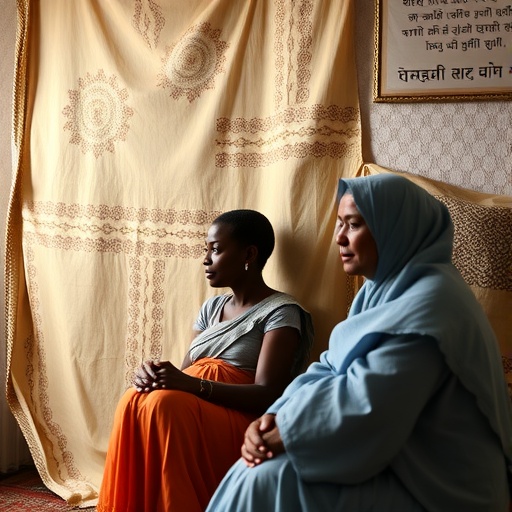A groundbreaking new cohort study published in JAMA Network Open has unveiled compelling evidence that socio-economic factors, notably poverty and social disadvantage, exert a significant and measurable impact on human fertility. By rigorously analyzing data from both women and men, the researchers have elucidated how low educational attainment and reduced household income correlate with diminished fecundability—the month-to-month probability of conception—and an elevated risk of subfertility. Interestingly, the study found no detectable association between these social determinants and miscarriage risk, a nuanced finding that invites deeper investigation into the biological and environmental mechanisms underlying reproductive outcomes.
This research emerges within a growing body of literature that underscores the profound influence of socio-economic status on various health parameters, yet it distinctly advances our understanding by linking these social disparities to specific fertility metrics. Fecundability, a crucial yet complex concept, captures the likelihood that a couple will conceive in any given menstrual cycle, serving as an essential indicator of reproductive health. By focusing on this parameter, the study offers precise insights into how poverty-related stressors and educational deprivation may impair reproductive capacity over time.
Crucially, the study operationalizes subfertility as either a prolonged time to pregnancy exceeding 12 months or the utilization of assisted reproductive technologies (ART), integrating both clinical and experiential dimensions of reproductive challenges. This dual characterization not only reflects the lived realities of couples facing fertility barriers but also contextualizes the role of socio-economic status in accessing and necessitating advanced medical interventions.
The authors employed robust epidemiological methodologies, harnessing longitudinal cohort data to track fertility outcomes across diverse demographic groups. Such an approach mitigates potential biases and confounders that often complicate the interpretation of fertility studies, including preexisting health conditions and lifestyle factors. Moreover, the inclusion of both male and female participants enriches the analysis by recognizing fertility as a bipartite phenomenon influenced by the health and socio-economic status of both partners.
Poverty and educational deficits are multifaceted social determinants that may influence fertility through several intertwined pathways. Nutritional deficiencies, heightened psychosocial stress, environmental exposures, and limited access to quality healthcare services collectively contribute to adverse reproductive health outcomes. This study’s findings reinforce the biological plausibility of these pathways, suggesting that socio-economic adversity compromises reproductive physiology, perhaps through hormonal dysregulation, impaired gametogenesis, or disrupted menstrual cycling.
One particularly salient aspect is the study’s identification that despite fertility challenges linked to socio-economic status, miscarriage rates remain statistically unaffected. This demarcation implies that while poverty and social disadvantage may hinder conception probability and prolong time to pregnancy, they do not necessarily increase the risk of pregnancy loss once conception has occurred. Such a distinction sharpens future research foci and clinical strategies by pinpointing which reproductive stages are most vulnerable to socio-economic inequalities.
From a public health perspective, the research calls for novel intervention frameworks that transcend conventional medical treatments for infertility. Recognizing social disadvantage as a modifiable risk factor positions fertility enhancement within broader socio-economic policy agendas. Efforts to improve educational opportunities, reduce poverty, and expand equitable healthcare access may yield substantial reproductive benefits, underscoring fertility as an integrative marker of population health and social justice.
The study’s corresponding author, Dr. Vincent W. V. Jaddoe of Erasmus MC, emphasizes the urgency of untangling the complex mechanisms driving the observed associations. He advocates for interdisciplinary research that bridges clinical epidemiology, social sciences, and molecular biology to unravel the causal chains linking socio-economic adversity to impaired fecundability. Such endeavors could pave the way for identifying biomarkers of social stress impacting reproductive function and inform personalized approaches to fertility care.
Technological advances in reproductive medicine, including assisted reproductive technologies, offer critical support for subfertile individuals but also raise ethical and accessibility concerns, particularly for socio-economically disadvantaged populations. This study highlights the necessity of balancing technological interventions with upstream socio-economic reforms to address fertility disparities comprehensively and sustainably.
Furthermore, the inclusion of a gender-inclusive analytic lens in the study challenges traditional paradigms that often focus predominantly on women’s reproductive health. By considering male partners’ educational and income levels, the research acknowledges the shared contribution to fertility and advocates for couple-centered assessments and interventions, recognizing that socio-economic deprivation impacts the reproductive potential of both sexes.
In sum, this landmark investigation contributes pivotal knowledge to the domains of reproductive epidemiology and social medicine. It accentuates that addressing fertility inequalities requires a multidisciplinary response encompassing public health policy, social support systems, medical innovation, and community education. As fertility challenges increasingly affect populations worldwide, understanding and mitigating the social determinants of reproductive health emerges as a public health imperative of global significance.
Future research inspired by these findings should aim to dissect the biological mechanisms through which social disadvantage transduces into reproductive dysfunction, potentially exploring epigenetic modifications, stress hormone cascades, and inflammatory pathways. Elucidating these mechanisms could open new therapeutic frontiers and sharpen prevention strategies tailored to vulnerable populations.
In closing, this study not only charts new scientific territory in linking socio-economic factors to human fertility but also resonates deeply with societal commitments to equity and health justice. By integrating rigorous epidemiological evidence with clinical insights and social consciousness, it lays a foundation for transformative approaches to enhancing reproductive outcomes and supporting the reproductive aspirations of all individuals, regardless of socio-economic background.
Subject of Research: The impact of poverty and social disadvantage, particularly low educational level and household income, on human fecundability and subfertility.
Article Title: (Not provided)
News Publication Date: (Not provided)
Web References: (Not provided)
References: (doi: 10.1001/jamanetworkopen.2025.32741)
Image Credits: (Not provided)
Keywords: Reproductive disorders, Women’s studies, Poverty, Risk factors, Pregnancy, Public health, Technology, Social conditions, Social inequality




